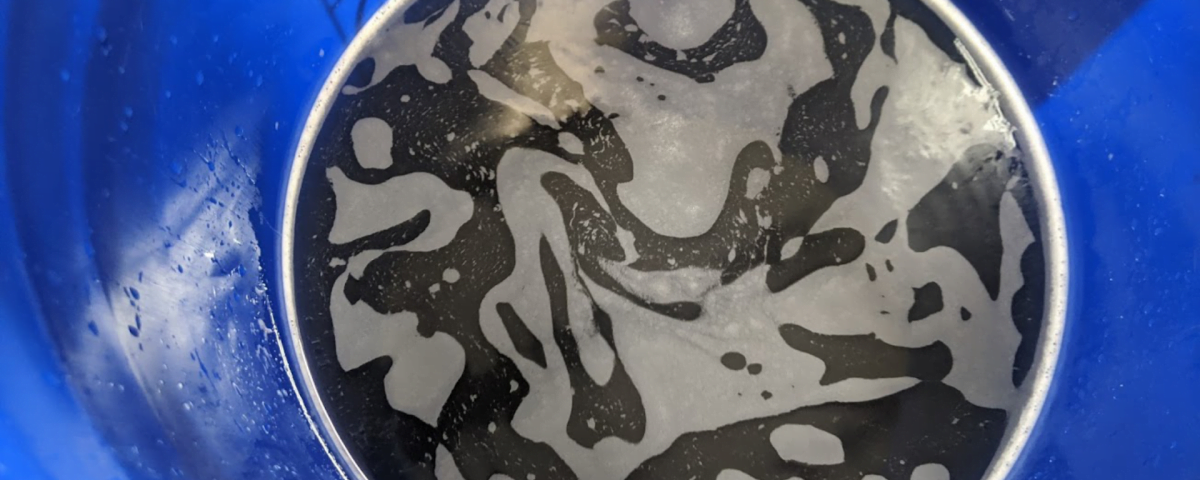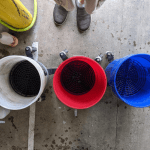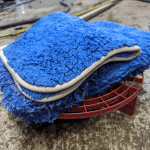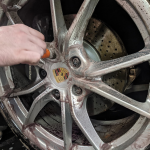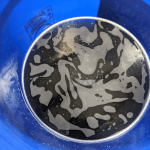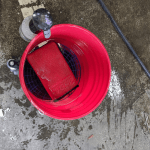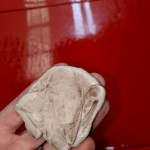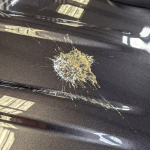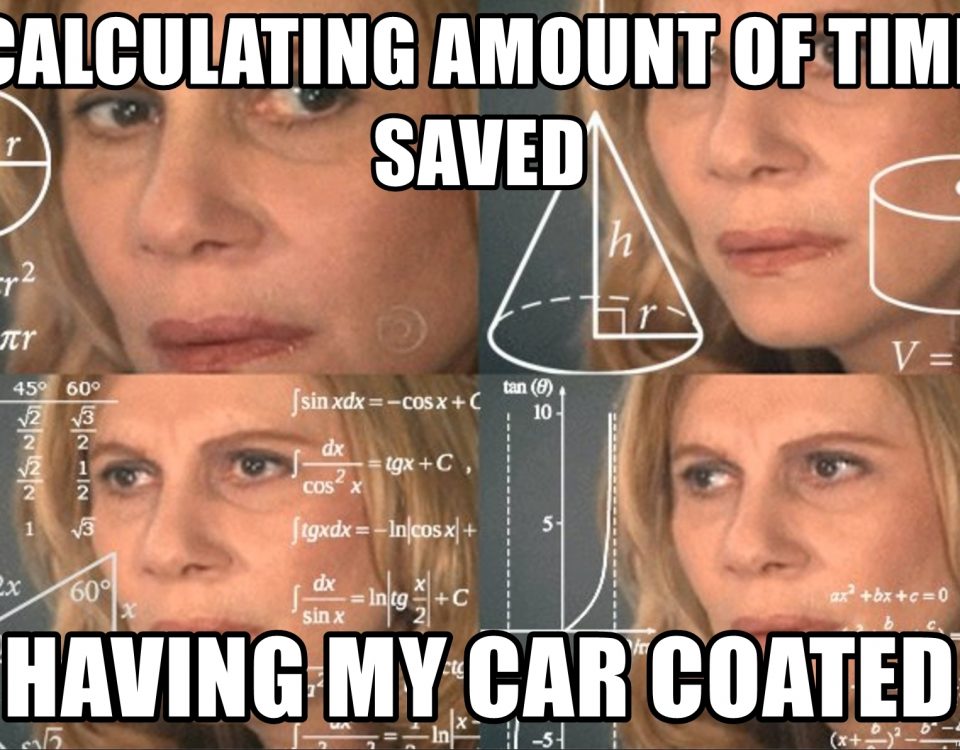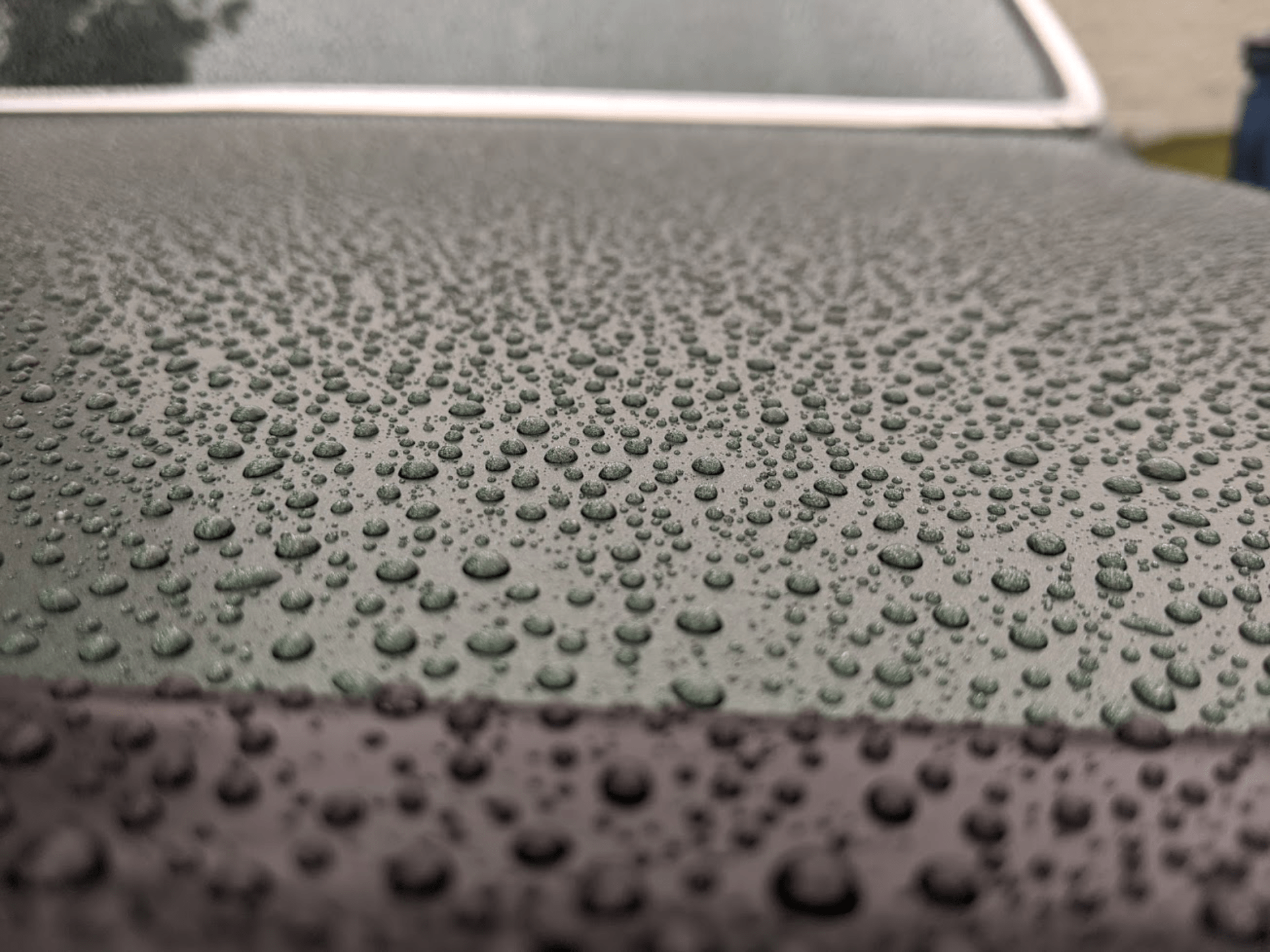
Washing my coated car the right way
April 12, 2021Washing your car the right way
Tools for Washing
Wheel Tools
Wash Chemicals
Location:
Setup
Start
BODY
Rinse from top to bottom.
Take 1 clean mitt to begin your wash. Each wash mitt should be flipped 1 time then returned to the rinse bucket.
You should be able to get about 2 panels per cycle. We normally start at the roof and work down.
Since most of the dirt will be focused on the bottom of the panels, try to only wash half way down before rinsing the mitt out.
Pop your gas cap and take the body boar's hair detail brush and clean one of the most overlooked areas.
Take a microfiber towel and make sure all your wheel arches and side view mirrors and all the other hard to reach areas have been cleaned.
Rinse Entire car and overview your work. This is normally where any "missed" spots are going to show. Take a microfiber to the wheels for any areas that you can see remaining dirt.
WHEELS
Since wheels and tires are one of the hardest parts of the wash. Brake dust, road dust, most modern vehicles wheels get very dirty very fast. To avoid any water spots from forming due to time spent on wheels. Start here.
Spray down all 4 tires and surrounding wheel arches to get as much of the road debris off of them as possible.
Spray down all 4 wheels with the Iron X/Sonax and allow to sit to remove any iron deposits
Agitate any remaining dirt and filth from tires using assorted brushes. Pay attention to corners of spokes and lug nuts
Can also use this on exhaust tips and suspension pieces that might be visible.
CLAY
Now that all of the filth is off the surface of the car, its time to remove the contaminants that are working their way into your clear coat. Pollen, Iron, Sap all are found attached to the clear and the only way to remove them is through a decontamination regimen. This is probably one of most often avoided steps when doing a wash and is one of the most rewarding. If your paintwork doesn't feel absolutely clean, like a mirror, then it will never be able to achieve a mirror-like finish.
Claying is easy. Lubricate and wipe. You can almost hear how bad it is when you are doing it, and once you can no longer hear the "scratching" then move off. The trick here is that it is NOT about pressure, but about FRICTION. You do not have to SCRUB when claying. Depending on just how bad the paint is, Knead the clay or rinse the block often. (Benefit of the block for the amateur: if you drop it, which you probably will, you can rinse it off and go. Clay you are normally not so lucky.) Take the ONR solution and mix according to instruction for "clay lube" (note: this can be used as a supplement in your wash water or as a waterless wash altogether). I also like the clay mitts as you are able to combine 2 "steps" into one while washing. (Wash on "rag" side, then clay on the "clay" side, rinse repeat)
We normally then go over the vehicle with 1 more round of washing to make sure no residue from the clay is left over. For those of you in the "car wash" bay, flip it to "Spotless" to use the deionized water which will aid in drying and avoid type 1 water spots.
Finish
Now that the surface is clean and clear of any debris, it is time to lay a foundation of protectant on the surface. This ensures both an easier cleaning experience next time as well as to keep the shine and luster of your vehicles sensitive surfaces. There are a number of great protectants on the market such as Valor from American Detailer Garage for ease and simplicity or one of our often grabbed protectants Shine Suply's Clutch for its potent punch. Both products are extremely versatile in use beyond paint such as glass and wheels but also rubber and plastics.
Throughout the week we love having a small spray bottle of some 10:1 Wipeout from ADG to catch any bird droppings and bug etchings you match catch along the way!

